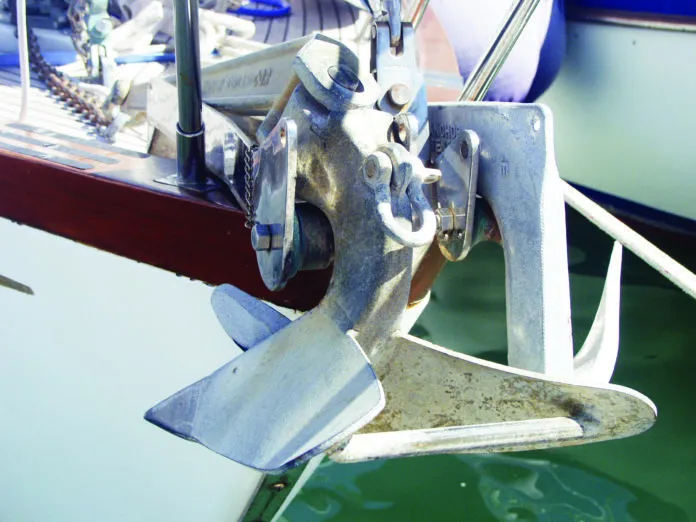When a sailor hooks his beloved boat to good, old Mother Earth, he hopes his anchor will stay put—for lunch, for a good night’s sleep, to ride out a storm or to keep the boat safe while unattended.
If done well, the anchor system should give him the cherished peace-of-mind.
However, there’s one threat that nags at him, especially when he’s not aboard.
It occurs when the wind or current sharply changes direction, a not uncommon phenomenon. That means that the well-set anchor must somehow re-align itself to the new heading. Two questions present themselves:
1. Does the anchor, without losing much of its grip, simply swivel in the mud or sand and steady up?
2. Or does the anchor pull free, flipping on its back or roll up on edge, and then re-set itself?
Seeking answers to these questions produced some dramatic results for this latest report in Practical Sailor’s continuing series on the in-the-water performance of about two dozens makes and types of anchors. Rather than one big test aimed at finding the perfect, all-purpose anchor, Practical Sailor has approached this subject carefully.
Three years of work thus far has produced these published reports:
• The first test to see which of 11 different anchors set best in sand. The top three, in order, were the Bulwagga, Spade and Bruce.
• The second test to review which of 15 had the best holding power in sand. Top-ranked were the Spade, Bulwagga and CQR.
• The final review to see which of 17 anchors set and hold best in mud. Tops for setting was the Delta with six anchors tied for second; for holding power, the rank was the Barnacle, CQR and Bulwagga.
For more advice and information on anchoring and details on these tests, purchase the ebook Anchoring in Sand and Mud from Practical Sailor.


































